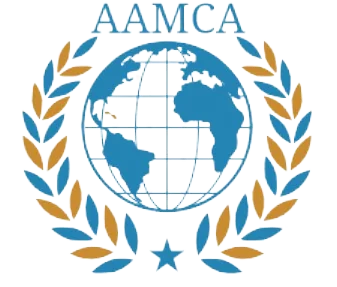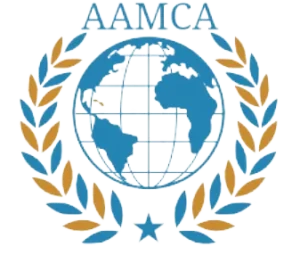The Global Mine Crisis: Understanding the Scope of the Problem
The presence of landmines and unexploded ordnance represents a significant global crisis that endangers the lives of millions. Currently, an estimated 100 million people across various regions live under the persistent threat of these explosive remnants of war. These devices pose a profound danger, as they remain active long after conflicts have ended, wreaking havoc on civilian populations and obstructing essential humanitarian efforts.
Geographically, the hotspots of mine contamination include countries such as Afghanistan, Myanmar, Sudan, Ukraine, and Syria, as well as the occupied Palestinian territories. These regions are not only characterized by historical and ongoing conflicts but also suffer from a lack of resources to address the dire repercussions of landmine contamination. The risks associated with landmines are indiscriminate, affecting anyone from children playing in fields to farmers working to sustain their families.
The devastating impact of landmines is evident in the alarming statistics surrounding casualties. Every year, thousands of people fall victim to these deadly devices, suffering severe injuries or fatalities that could have been prevented. Additionally, the contaminated areas hinder access to vital services, such as education and healthcare, as individuals are often unable to navigate or utilize land without risking their lives. In countries like Afghanistan and Syria, where international support is crucial for recovery, mine contamination further complicates efforts to provide humanitarian aid and rebuild communities.
In summary, the global mine crisis is a pressing issue that must be addressed urgently. The alarming statistics surrounding the risks of landmines highlight the need for a coordinated effort to raise awareness, promote demining initiatives, and ensure that affected communities receive the support they need to grow and prosper in a safer environment without the threat of these explosive remnants looming over them.
The Role of Mine Action: Heroes on the Ground
Mine action personnel, including highly trained individuals from the United Nations and various partner organizations, play a pivotal role in ensuring the safety and security of communities in post-conflict areas. Their work revolves around the crucial operations of locating and neutralizing landmines and unexploded ordnance (UXO), which pose significant risks to civilians, particularly in regions scarred by conflict. The consequences of these hidden threats can be devastating, leading to loss of life, injury, and hindering humanitarian efforts in war-torn regions.
One of the key responsibilities of mine action teams is to conduct thorough assessments to identify contaminated areas. Through rigorous surveys and advanced technologies, these personnel work diligently to map out affected zones and prioritize their clearance. This process not only ensures the immediate safety of local populations but also facilitates the return of displaced individuals to their homes, allowing communities to begin the recovery process. Each successful mission adds a layer of assurance to those living in the shadows of past conflicts.
The commitment of these heroes is further underscored by their focus on education and outreach programs. Mine action teams engage in community education initiatives, raising awareness about the dangers posed by mines and UXO. By providing crucial information and training on how to recognize these threats, they empower individuals to avoid dangerous areas and report suspicious findings. Such programs are essential for promoting community resilience and fostering a culture of safety in regions grappling with the aftermath of warfare.
Personal stories from the field often highlight the bravery of mine action personnel. For example, in recent operations in Gaza, teams faced immense challenges yet remained steadfast in their mission. Despite the harrowing conditions, these individuals risk their lives daily, displaying unwavering dedication to their work. They are indeed the unsung heroes whose efforts transcend the realm of mere duty; they are champions of safety and restoration for those whose lives have been irrevocably altered by conflict.
Building Safe Futures: The Theme and Its Significance
The theme for the International Day of Mine Awareness and Assistance in Mine Action for 2025, ‘Safe Futures Start Here,’ serves as a powerful reminder of the critical role that mine action plays in rebuilding communities affected by conflict. This initiative underscores the urgent need for mine clearance operations, which are essential for ensuring that individuals in affected areas can safely return to their homes and lives. The devastation caused by landmines and unexploded ordnance poses a significant barrier to recovery, threatening the safety of both individuals and communities striving for stability.
Mine action encompasses a broad spectrum of activities aimed at reducing the risk and impact of landmines and explosive remnants of war. By effectively clearing these hazardous materials, we create the groundwork for rebuilding essential infrastructure, facilitating economic development, and promoting long-lasting peace. The timely removal of mines not only saves lives but also instills a sense of security in the hearts of local populations who have suffered the scars of conflict. This effort is particularly vital for displaced individuals and families seeking to reintegrate into their communities.
Furthermore, the theme ‘Safe Futures Start Here’ highlights the transformational power of creating safe environments for those affected by conflict. By ensuring the safety of both individuals and communities, we enable a conducive atmosphere for education, healthcare, and economic opportunities. In this regard, mine action plays an instrumental role in the broader context of humanitarian response and development, inviting collaboration among governments, NGOs, and local communities to foster a safe and secure future for all. Ultimately, recognizing the importance of mine clearance and awareness is a powerful call to action, reminding us that a peaceful future begins with a commitment to safety and security in mine-affected regions.
A Call for Global Action: Implementing International Treaties
The urgency of addressing the humanitarian impacts of landmines remains a critical issue that demands immediate attention from nation-states across the globe. The Anti-Personnel Mine Ban Convention and the Convention on Cluster Munitions represent crucial international treaties that seek to mitigate the devastating effects of these explosive ordnance on civilian populations. As we approach 2025, it is essential for countries that have not yet ratified or acceded to these treaties to do so without delay. Adherence to such agreements is vital in promoting global humanitarian norms and principles aimed at protecting the most vulnerable individuals in conflict-affected areas.
Despite significant progress, many states have yet to commit fully to these international frameworks. This inaction not only perpetuates a cycle of violence but also increases the risks faced by civilians in post-conflict environments. The adoption and implementation of these treaties should be prioritized to not only eliminate the use of antipersonnel mines and cluster munitions but also promote responsible practices regarding the use of explosive weapons in populated areas. The humanitarian principles outlined in these agreements highlight the importance of minimizing civilian harm and protecting innocent lives from inhumane weaponry.
Collective global efforts are imperative in addressing these threats. Nations must collaborate to share knowledge, resources, and best practices for mine clearance, victim assistance, and risk education. Furthermore, regional partnerships and international coalitions can strengthen advocacy efforts for compliance and accountability among member states. Tackling the dangers posed by explosive ordnance necessitates a united front, wherein all stakeholders contribute towards establishing a safer environment free from the risks associated with these weapons. The call for global action to implement and adhere to these key treaties cannot be overstated—it is essential for the creation of a more secure future for all.




